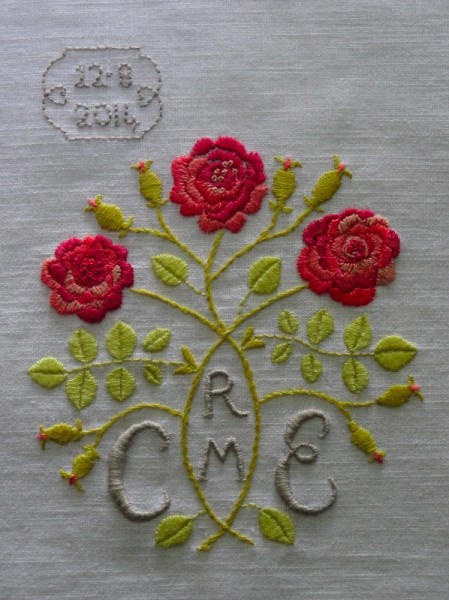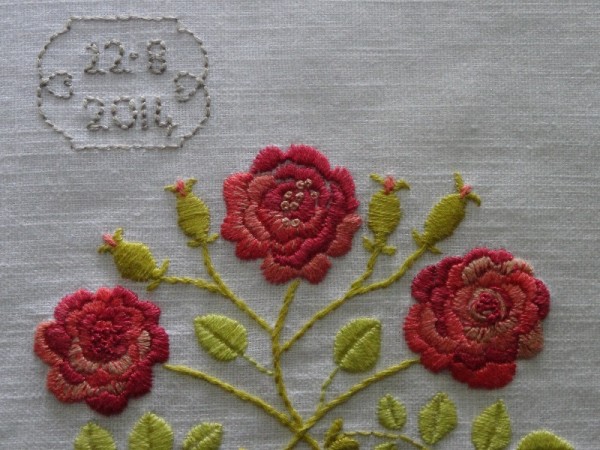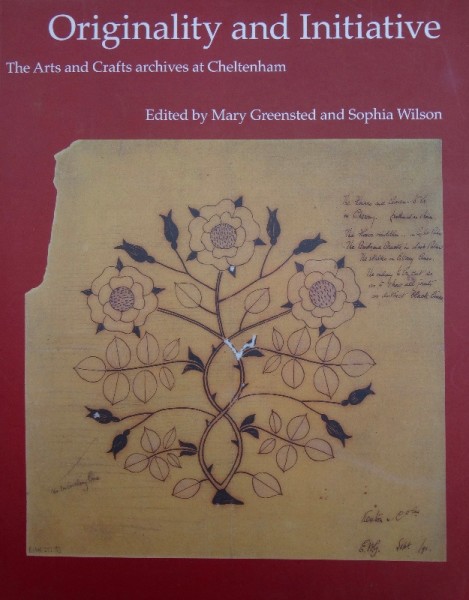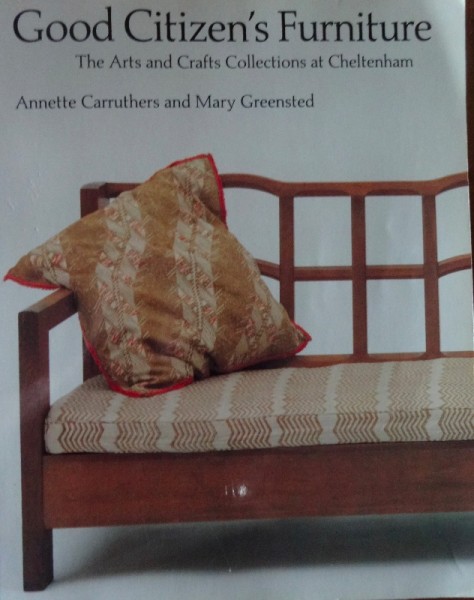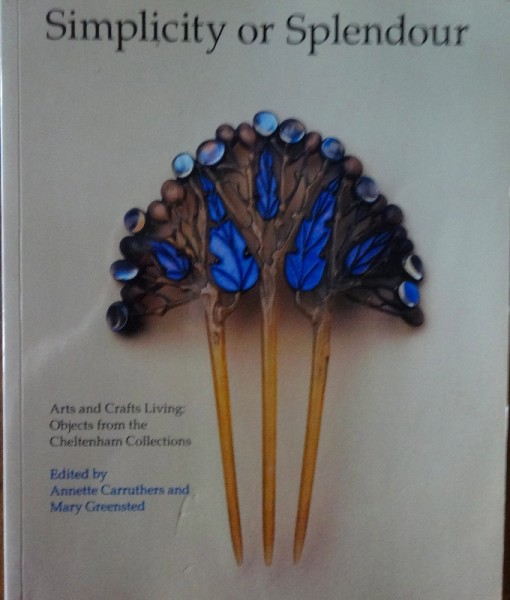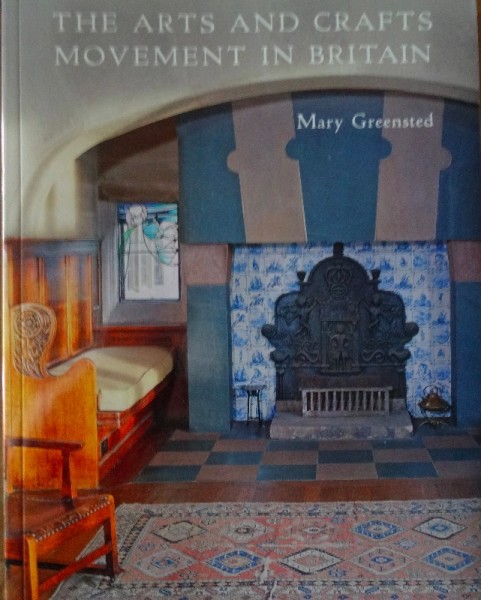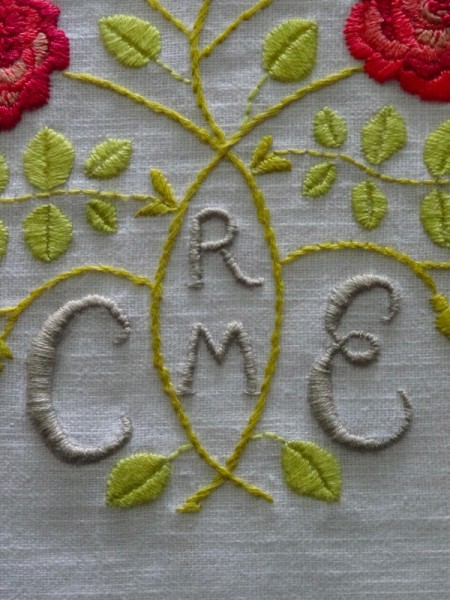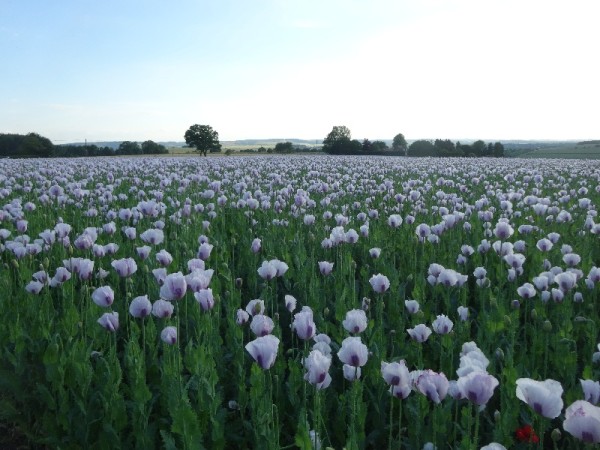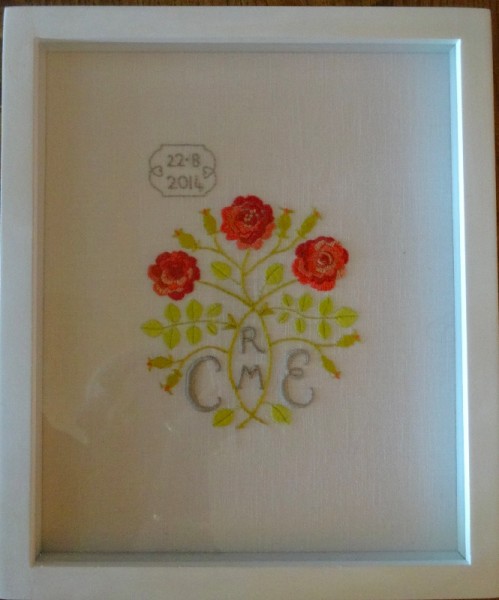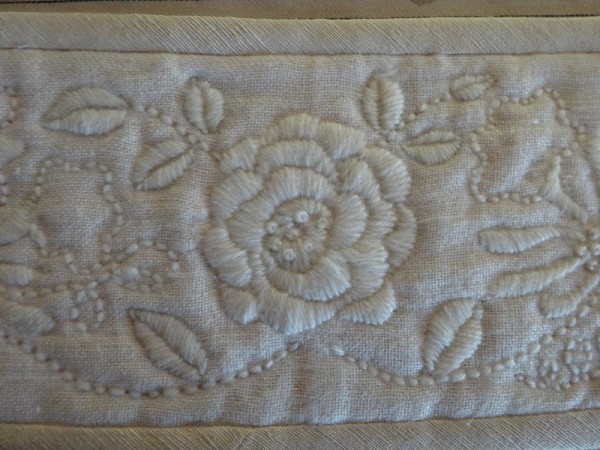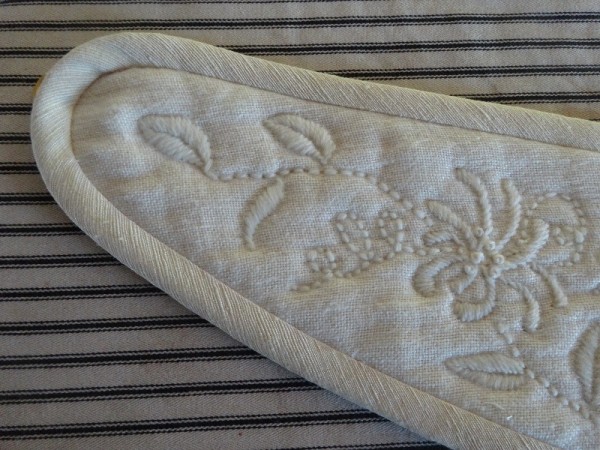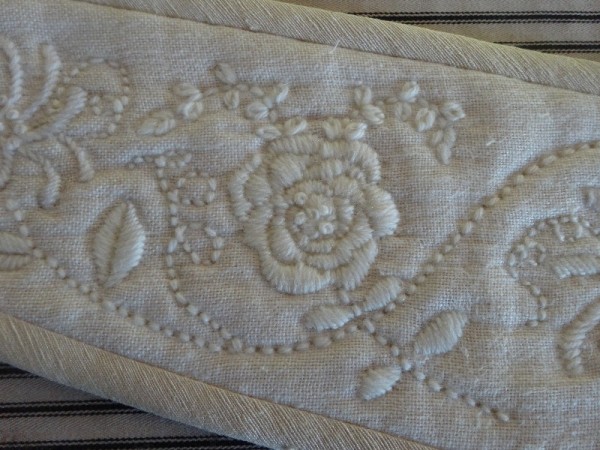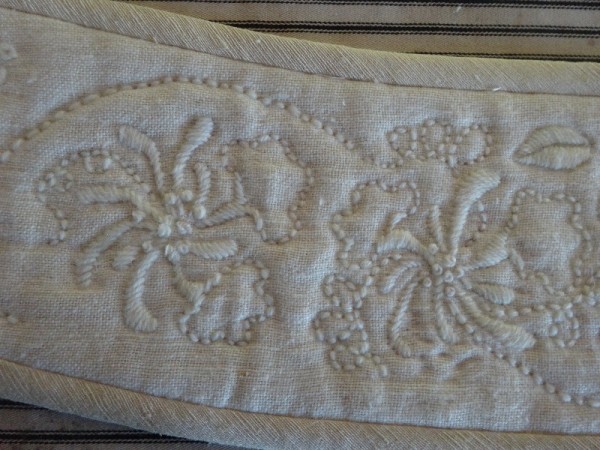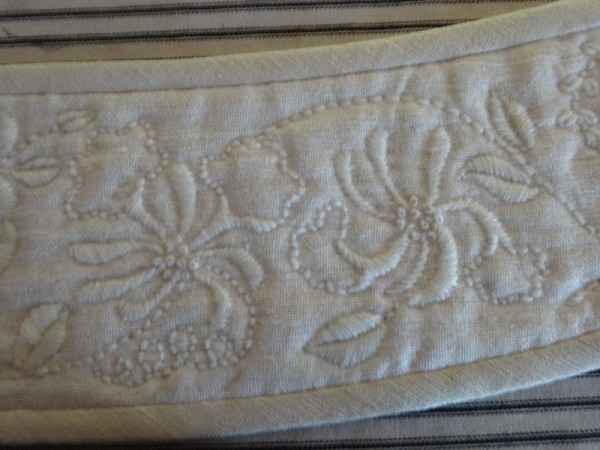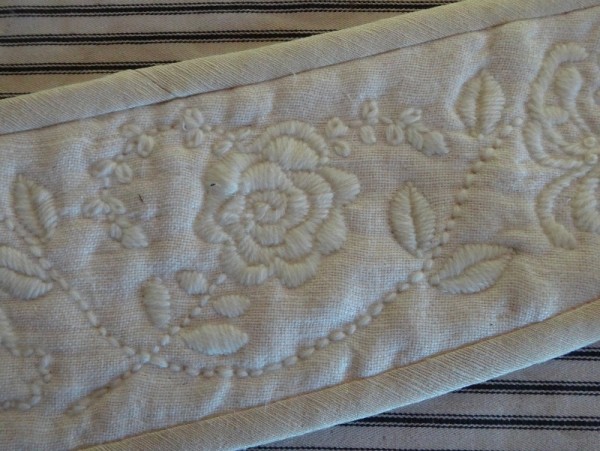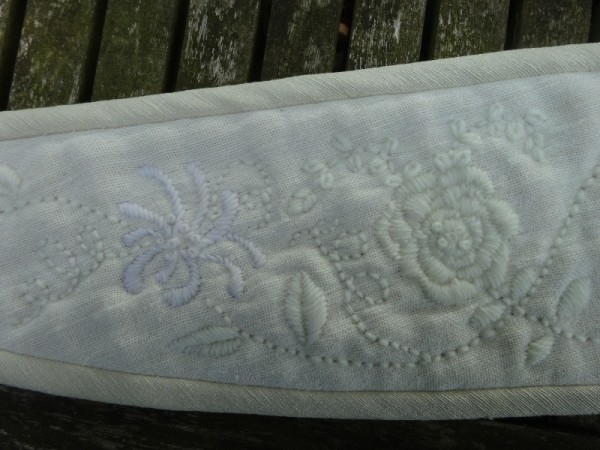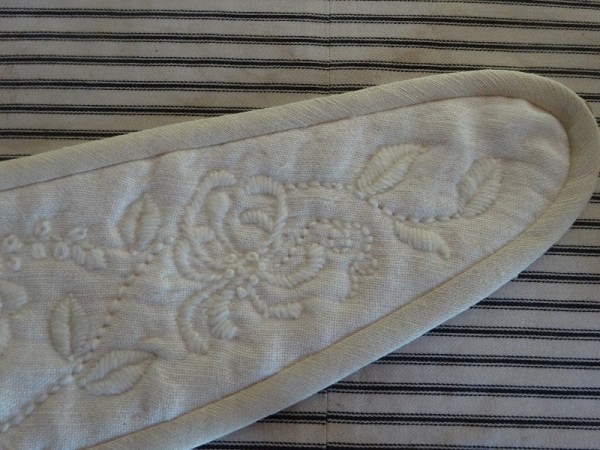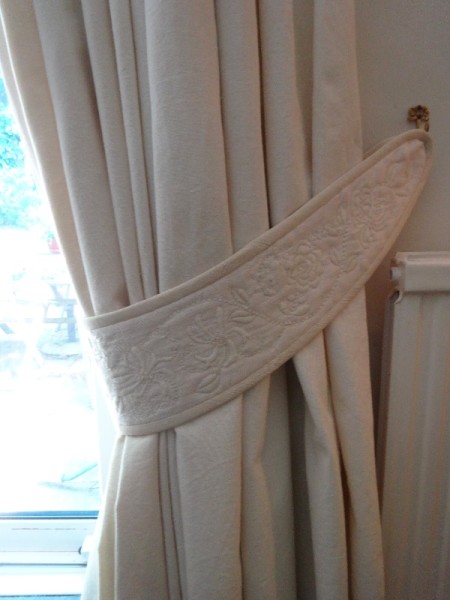Although June has not been as lovely as we would wish it, the long light evenings have been particularly pleasant and permitted prolonged embroidery sessions.
Rain has come mainly at night and although there has not been enough to satisfy the farmers, the crops are beginning to look impressive to the naive, i.e. me and the vicar. Barley, the first major crop to be harvested, is starting to show hints of gold in its ghostly quivering while grey-green wheat is looking very formal, stiff and ram rod straight.
But the poppies…oh the poppies have burst into unrestrained life and within a single day a field of rather cabbagy looking vegetation has turned into a a cloud of mauve-white flower heads. For a very short time – probably not much more than a week – they will continue being breathtakingly beautiful and looking utterly exotic. The oil seed rape, now quite tall and airy-fairy looks very understated in comparison with the other crops.
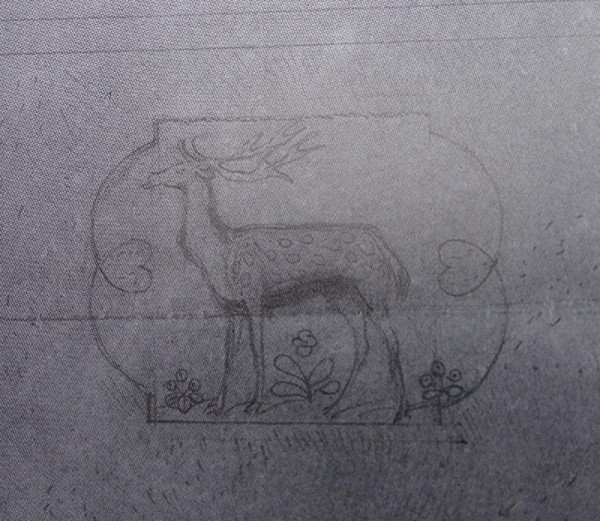
Sketch by W.R.Lethaby (from Originality & Initiative: Mary Greensted & Sophia Wilson (Cheltenham Art Gallery & Museum, 2003)
In the hedgerows and along field borders, wild cherries are showing visibly red fruit which I’ve never noticed before as they’re usually stripped by birds immediately on ripening (too few birds or lots of cherries ? – I hope and think the latter). It seems also to have been a very good year for blossoms and flowering plants in general – my white cistus (Cistus purpureus with panda eyes) has never been so happy. And it’s happy for me too as I really like this sort of June, not too hot, not too wet, not too windy, the days long and the countryside in a state of gentle flux. I look up from embroidery and relax my eyes on green fields stretching away to the horizon and blue skies. An English bliss – understated and not too extreme.
The first of the two baptism monograms to be given as presents in early July is now finished. The embroidery was inspired by an Ernest Gimson design for an inlaid cabinet which appears on the cover of a book recording items in the Arts and Crafts archive collection held by Cheltenham Art Gallery and Museum. Sketches and drawings not often on display are detailed in the book and Gimson’s designs – inlaid wood and metalwork in particular – are a rich source of inspiration as they can easily be adapted for little embroideries.
The Arts and Crafts collection at Cheltenham Art Gallery and Museum is a designated collection of national importance and a wonderful showcase for the many brilliant craftsmen (and some women, like the textile printers Phyllis Barron and Dorothy Larcher) who lived and worked in the Cotswold villages above the town. My husband was director of the museum in the early 1970s (for about 8 years) and his first appointment was Mary Comino (after marriage, Mary Greensted) whose book cover inspired my embroidery. She has been the author/co-author of other books highlighting different aspects of Cheltenham’s collection, most notably Gimson and the Barnsley ‘Wonderful furniture of a commonplace kind’* (as Mary Comino), Good Citizen’s Furniture, Simplicity and Splendour (the decorative arts – jewellery, ceramics, textiles, glass, leather and plasterwork ) and Originality and Initiative (detailing the archive of printed material). All wonderful books to have in the bookshelf, close to hand for inspiration when creativity is flagging.
*This is the young Gimson’s description of the work of his friend William Lethaby exhibited in the 1890 Arts and Crafts Exhibition, but it can equally be used to describe his own work and that of the two Barnsley brothers. There’s something so deeply satisfying in such a description – as is also the case with the notion of ‘good citizen’s furniture’ (with a hint of ambiguity).
Wouldn’t it be wonderful if the handmade – or even hand finished – were to make a massive come back in the creative life of this country? The Chinese weren’t keen on Spode made in China and wanted ‘Made in England’ stamped on the bottom. Similarly with Burbery. Wonderful Emma Bridgewater has reversed a tidal exit and moved INTO the Potteries and in the process is bringing joy and work to local people who probably thought they would never put glaze to pottery again. There must be a message for us in this. Let’s all go for buying fewer things of better quality. (Dearest children, I mean you too.)
Do go to Cheltenham and visit the museum, but please note, it has now somewhat bizarrely been renamed ‘The Wilson’ after artist-scientist Edward Wilson, a local hero who travelled with Scott on that ill-fated expedition to the Antarctic. Well done Edward and all that but why oh why would the powers that be rename something with such an off at a tangent name when the institution already had the perfect name??
For more about opium poppies see here & here (half-way through my post on harvest if you want to know about it as cash crop).

